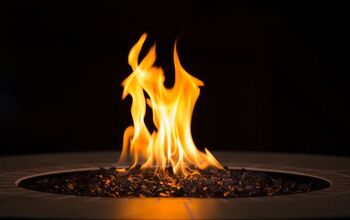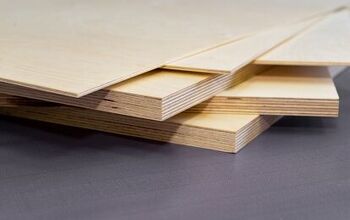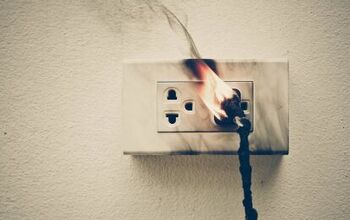Where Is Fire Caulking Required? (Find Out Now!)

Fire caulking is one of the best strategies you can use to protect a building in case of a fire. It ensures maximum safety for properties by sealing joints, seams, and other openings. When fire caulking is installed correctly, it can prevent property damage, injury, and even death.
Fire caulking is usually required in most commercial and industrial properties, as well as buildings with complex electrical systems. Check local building and fire codes as well as state and federal requirements to determine whether fire caulking is required. It’s best to have a professional install fire caulking unless you have experience with fire stop products.
In this article, we’ll cover what fire caulking is and what its benefits are. We’ll also discuss requirements for fire caulking as far as building types and specific areas within buildings. Finally, we’ll provide a brief overview of the fire caulking installation process.
Do You Need Fire Protection and Prevention Services?
Get free, zero-commitment quotes from pro contractors near you.

What Is Fire Caulking?
Fire caulking, also called fire stopping, is a method of ensuring maximum fire safety for buildings. It consists of sealing joints, seams, and other openings within a structure. Federal caulking is required by federal and state laws as well as local building codes.
Properties need to be fire caulked properly so that a fire can be controlled if it occurs. When installed correctly, fire caulking is very effective, preventing additional property damage and even saving lives.
What Are The Benefits Of Fire Caulking?
The main benefit of fire caulking is that it can prevent fire from spreading. Fire caulking is designed specifically to expand when temperatures are high. It typically starts to expand when temperatures reach 200 degrees.
At this point, the fire caulking fills the penetration or joint, blocking both the flames and smoke. It keeps the fire in the area where it originated. Not only does fire caulking protect the building from damage, but it can potentially save lives as well.
Fire caulking keeps smoke and fire from entering other parts of the building. By preventing the spread of the fire, it allows the fire department more time to arrive onsite. Fire caulking is relatively inexpensive and can save you a lot of money in the long run.
Where Is Fire Caulking Required?
Fire caulking is required in most commercial and industrial properties, but it’s also needed for some homes. The best way to know for sure whether you need fire caulking is to check your local fire code laws. Start with the local building codes, and then go through the state and federal requirements.
Often, fire-resistance-rated buildings are required to have fire caulking. Buildings that house complex electrical systems usually need fire caulking as well. Generally, fire caulking is necessary for the most combustible areas of a property.
So, you’ve figured out that your property needs fire caulking according to local codes or other requirements. But which specific areas of the property need fire caulking? There are three main areas to pay attention to.
Through Penetrations
A through penetration is a breach in both sides of a floor, floor-ceiling, or wall assembly. Through penetrations must be fire caulked so that fire can’t travel through the breach and spread.
Membrane Penetrations
A membrane penetration refers to a breach in one side of a floor-ceiling, roof-ceiling, or wall assembly. Similar to through penetrations, membrane penetrations also need fire caulking for maximum safety.
Joints And Perimeter Barriers
A joint or perimeter barrier is an opening in adjacent assemblies (or between adjacent assemblies). Joints and perimeter barriers are created to allow the building to move independently due to seismic, thermal, or wind energy. They must also be fire caulked to prevent the spreading of flames and smoke throughout the building.
How To Install Fire Caulking
The following guide is very basic and is intended to give you an overview of the installation process. To install fire caulking properly, it’s crucial to be familiar with local building and fire codes. You’ll also need to know about any state or federal requirements.
While installing fire caulking, be sure to refer to the manufacturer’s instructions for information such as specific dimensions. Fire caulking is frequently installed incorrectly, so it’s wise to hire a professional if you’re not familiar with the process.
When appropriately installed, fire caulking can prevent the spread of fires and even save lives. But when it’s not installed correctly, fire caulking is essentially useless. That’s why it’s so important to familiarize yourself with local codes and other requirements before installation!
Step 1: Gather Your Supplies
Aside from the fire caulking, you’ll also need a piece of EMT (Electric Metallic Tube) conduit to accommodate the cables. You’ll also need mineral wool batting and latex or polyvinyl gloves.
Step 2: Make A Hole
Make a hole, ensuring it’s just large enough for the piece of EMT.
Step 3: Insert The EMT
Place the EMT conduit into the hole you’ve just made, and pull the cables through the conduit.
Step 4: Insert Mineral Wool Batting
After putting on your gloves, it’s time to insert the mineral wool batting. Use enough to create a wall at least one inch thick on either side of the EMT conduit. Do your best to keep the cables centered inside the tube during this step.
Step 5: Apply Fire Caulk
Remove the wrapping from the fire caulk and tear off a chunk. Manipulating the caulk until it’s malleable and easy to work with. Roll the chunk into the shape of a tube and insert it into the tube with your wires. Remember to keep the wires centered.
There should be minimal gaps in the areas where there is no fire caulk. At least one inch of the caulk should be inside the tube. Meanwhile, another 1/2 to 3/4 of an inch should be located outside of the pipe.
Step 6: Continue Applying Fire Caulk
Next, tear off another chunk of fire caulk. This one should be slightly larger than the first. Work with it until it becomes malleable, and then roll it into a tube.
Insert the second chunk of fire caulk into the gap between the EMT and the wall. Smooth it around the conduit. About half an inch should be on the wall, and half an inch should be on the EMT.
Step 7: Repeat The Process
Repeat steps four through six on the other side of the wall.
Do You Need Fire Protection and Prevention Services?
Get free, zero-commitment quotes from pro contractors near you.

Related Questions
Is fire caulking waterproof?
Fire caulking isn’t usually waterproof, but some products can form a watertight seal. Depending on the fire caulking you use, it may create a barrier to water leakage.
What is fire caulking made of?
Fire caulking is made of slightly different materials depending on the specific product. However, it usually consists of a single component water-based acrylic intumescent firestop. Intumescent means that the caulking swells up when heated, closing gaps and blocking fire from spreading to other areas.
Is fire caulking paintable?
You can usually paint fire caulking, but it can vary from product to product. If you want to paint your fire caulking, be on the lookout for products marketed as paintable. Usually, you can use water-based, solvent-free paints on top of fire caulking.

With a lifelong passion for writing plus strong enthusiasm for home improvement and DIY projects, joining the team at Upgraded Home was an easy choice. Jessica Allen likes to share helpful information with current and aspiring homeowners. Aside from writing, Jessica loves doing yoga, playing the piano, and dabbling in graphic design.
More by Jessica Allen















![10 Most Dangerous Neighborhoods in Baltimore [Updated]](https://cdn-fastly.upgradedhome.com/media/2023/07/31/9075655/10-most-dangerous-neighborhoods-in-baltimore-updated.jpg?size=350x220)











